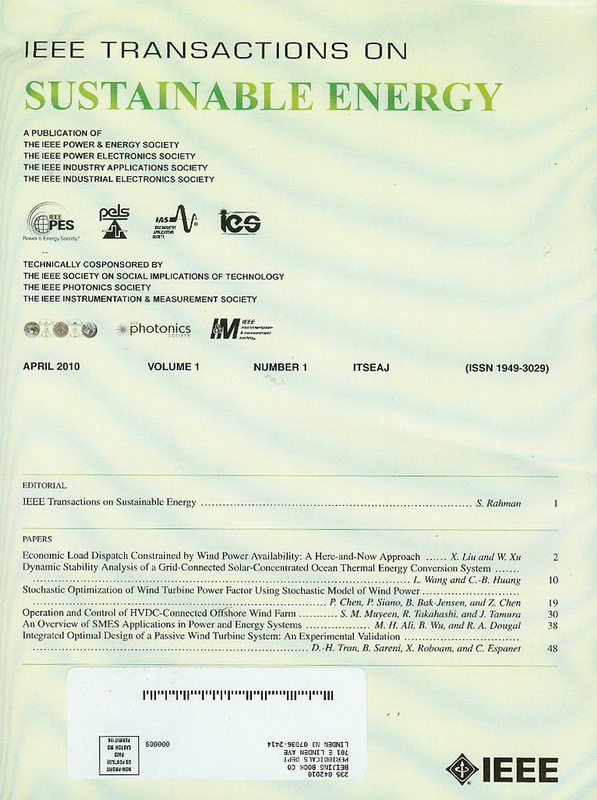波浪能半实物试验台架中电能存储的集成
IF 10
1区 工程技术
Q1 ENERGY & FUELS
引用次数: 0
摘要
本文提出了一种将电能存储单元集成到波能转换器(WECs)硬件在环(HIL)试验台的设计方法。通常情况下,与平均值相比,WECs发电量的特点是在低频和峰值处出现明显波动。波浪能测试设备应该能够重现这些变化,以对被测设备施加实际条件。因此,钻机的电网连接必须调整大小以应对高峰,并且可能需要额外的措施来避免对附近负载的干扰和对电压质量的负面影响。电能存储的集成可以平滑功率波动并减轻这些缺点,同时降低安装和运行成本。设计方法指出如何有效地确定存储单元的大小,以及基于测试活动的类型和持续时间支持哪种技术。给出了双HIL试验台的数值模拟结果和三种不同WEC技术的运行概况。对于储能寿命短于日历寿命的设计,敏感性分析表明,钻机的年利用率和加速测试水平对储能需求有显著影响。本文章由计算机程序翻译,如有差异,请以英文原文为准。
Integration of Electrical Energy Storage in Wave Energy Hardware-in-the-Loop Test Rigs
This paper presents a design methodology for integrating an electrical energy storage unit into a hardware-in-the-loop (HIL) test rig for wave energy converters (WECs). Typically, the power production from WECs is characterised by pronounced fluctuations at low frequency and high peaks compared to the average. Wave energy test rigs should be able to reproduce these variations to impose realistic conditions to the device under test. Thus, the grid connection of the rig must be sized to cope with high peaks, and additional measures may be required to avoid disturbances on nearby loads and negative effects on voltage quality. The integration of electrical energy storage can smoothen power fluctuations and mitigate these drawbacks, while resulting in lower installation and operating costs. The design methodology indicates how to effectively size the storage unit and which technology to favour based on the type and duration of test campaigns. Numerical simulation results are presented for a dual HIL test rig and operational profiles of three different WEC technologies. For designs with energy storage lifetime shorter than the calendar life, sensitivity analyses indicate that the rig's annual utilisation rate and the level of accelerated testing have a significant effect on the storage energy requirements.
求助全文
通过发布文献求助,成功后即可免费获取论文全文。
去求助
来源期刊

IEEE Transactions on Sustainable Energy
ENERGY & FUELS-ENGINEERING, ELECTRICAL & ELECTRONIC
CiteScore
21.40
自引率
5.70%
发文量
215
审稿时长
5 months
期刊介绍:
The IEEE Transactions on Sustainable Energy serves as a pivotal platform for sharing groundbreaking research findings on sustainable energy systems, with a focus on their seamless integration into power transmission and/or distribution grids. The journal showcases original research spanning the design, implementation, grid-integration, and control of sustainable energy technologies and systems. Additionally, the Transactions warmly welcomes manuscripts addressing the design, implementation, and evaluation of power systems influenced by sustainable energy systems and devices.
 求助内容:
求助内容: 应助结果提醒方式:
应助结果提醒方式:


